|
Warner
Gear In World War Two
Muncie, IN
1901-2009
A Division of Borg-Warner after 1928
This page updated 6-1-2024.
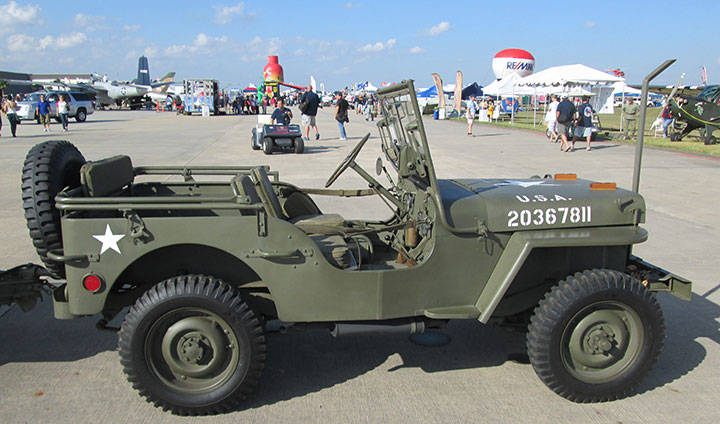
The Jeep is the most famous and recognizable
vehicle of World War Two. This 1/4-ton 4x4 truck was ubiquitous
for its service in the war. It was so well-designed and
utilitarian that vehicles with the Jeep name are still being made today.
Many of them still closely resemble the ones built during World War
Two. All 631,927 Jeeps that were built during World War Two by the
Ford Motor Company and Willys-Overland had Warner Gear transmissions in
them. This Willys-Overland-built Jeep was produced in Toledo, OH
in June 1944 with a Warner Gear transmission model number AS2-T-84-J.
Willys-Overland Jeeps were designated MB.
Author's photo.
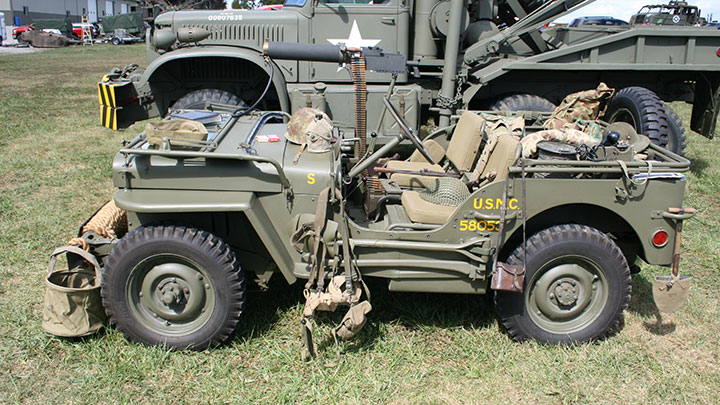
The Ford-built Jeep in this photo
displays the markings of the United States Marine Corps. It is one
of 281,578 that Ford built with Warner Gear transmissions.
Ford-built Jeeps were designated at GP and GPWs. Author's photo.
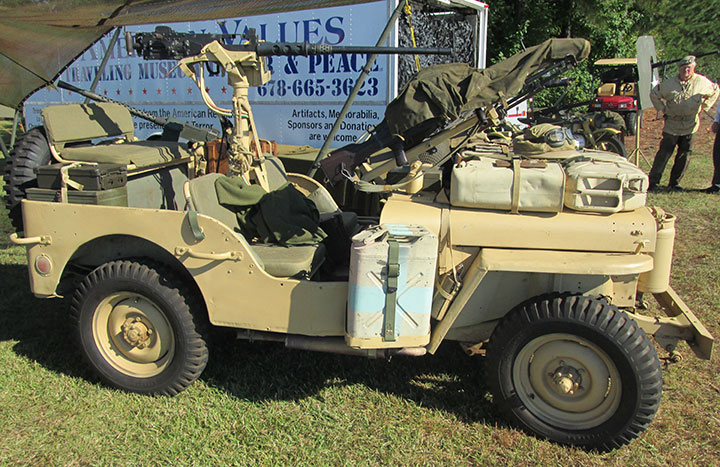
This Ford-built GPW was delivered May 1943
with a Warner Gear AS2-T-84-J transmission. Not only did American
forces use the Jeep on a world-wide basis during World War Two, but
other countries used the Jeep in their military services. This one
is shown as a British Long Range Desert Group vehicle. Author's photo.
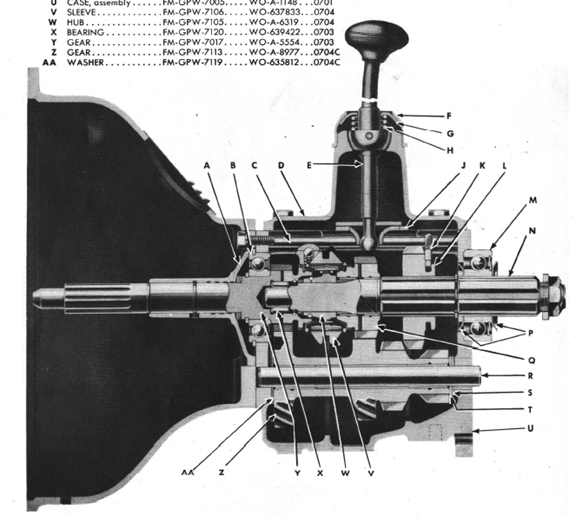
The Warner Gear transmission model
number AS2-T-84-J.
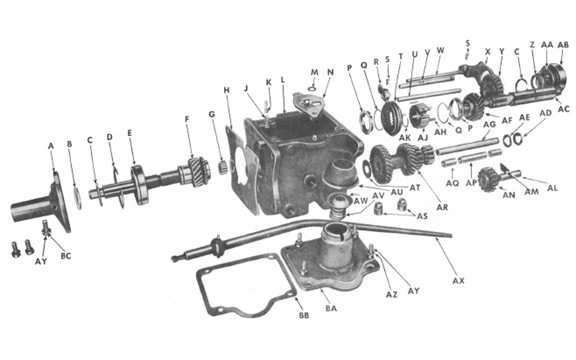
This is an exploded view of the Warner
Gear AS2-T-84-J.
The Warner Gear Company was established in
1901 by brothers Tom and Harry Warner in Muncie, IN. They started
manufacturing a transmission of their design with a differential gear
that allowed the wheels on a vehicle to turn at different speeds when
the vehicle turned.
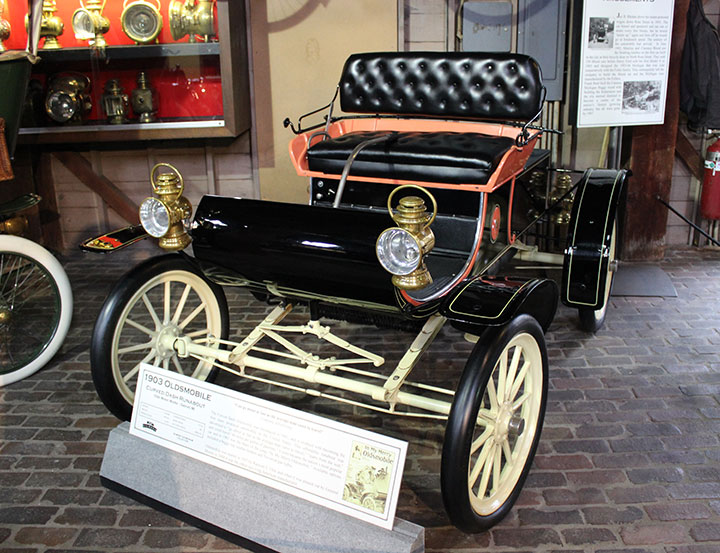
R.E. Olds was so impressed with the Warner
brothers' transmission that he purchased 4,000 of them for the Curved
Dash Oldsmobile.
Author's photo.
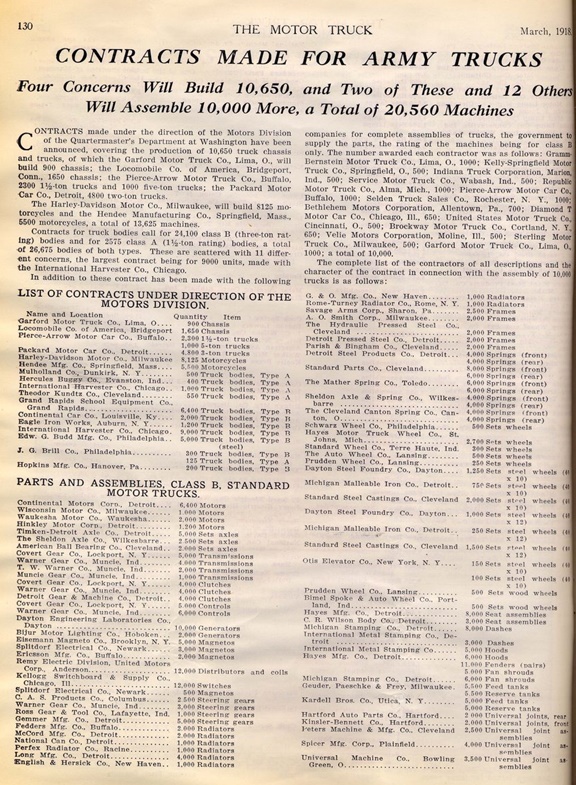
During the first World War, Warner Gear had
orders for 4,000 transmissions, 4,000 clutches, 6,000 controls, and
2,000 steering gears for the Class B, Standard Motor Truck. This was more commonly known as the Liberty Truck. Document
courtesy of Warren Richardson.
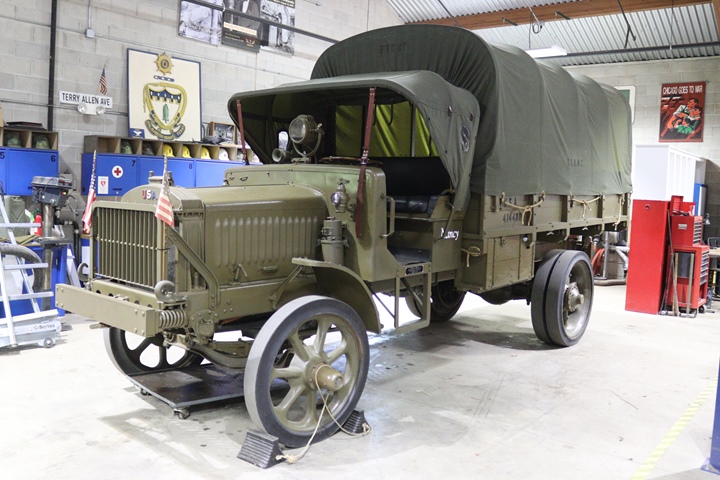
This World War One Class B Liberty Truck has
been restored to operating condition by the First Division Museum in
Wheaton, IL. Author's photo.
In 1919, Warner Gear developed and began
marketing a standard automotive transmission, the T-64. This
transmission was used in many vehicles of the era, as it was mass
produced and the most cost effective transmission on the market.
In 1920 and 192,9 Warner Gear built plants in the near southeast side of
Muncie in the area of South Hackley and East Seymour Streets.
In 1928 Warner Gear became a division of Borg Warner that was formed
from Warner Gear and several other companies. In 1930 a new plant was built on the west side of Muncie.
This half mile long site would later become the company's main manufacturing plant.
In 1940 the company was the first to manufacture a transfer case for a
four-wheel drive vehicle. The company reached peak employment in the early
1950s with 6,100 employees. Warner Gear was the first company to
build the T-10 manual transmission for the new Chevrolet Corvette. After
a general decline over the post-World War Two years, Warner Gear shut
down its operations on April 24, 2009.
Warner Gear World War Two Production: The company built
901,397 transmissions to help win World War Two as noted in Table 1.
It also built at least 12,314 transfer cases for the war effort. Warner Gear also built
241,067 parkng brakes, gear sets
for light tanks,
37 types of aircraft gears, truck brake hangars, bearing retainers,
de-clutching units, brake drums, output shafts, axle gears, cylinder
sleeves, aircraft turret elevating shafts, and super charger shafts.
Table 1 - World War Two Vehicles
Accepted by Detroit Ordnance, US Army with Warner Gear
Transmissions
The information below comes from "Summary Report of
Acceptances, Tank-Automotive Material, 1940-1945."
Published by Army Services Forces, Office, Chief of
Ordnance-Detroit, Production Division, Requirements and
Progress Branch
January 21, 1946. |
|
Warner Gear Model Number |
Type |
1941 |
1942 |
1943 |
1944 |
1945 |
Total |
| AS2-T-84-J |
Willys-Overland Truck, 1/4-ton,
4x4, Command (Jeep) |
9,129 |
83,739 |
91,955 |
108,806 |
56,720 |
350,349 |
| AS2-T-84-J |
Ford Truck, 1/4-ton,
4x4, Command (Jeep) |
3,700 |
88,987 |
80,721 |
73,262 |
34,908 |
281,578 |
T93 with
Cleveland U-joint flange
AS1-T93 without U-joint flange |
Studebaker US6
2-1/2-ton, 6x6 Cargo Truck |
3,912 |
20,642 |
31,440 |
41,965 |
30,162 |
128,121 |
T93 with
Cleveland U-joint flange
AS1-T93 without U-joint flange |
Studebaker US6
2-1/2-ton, 6x4 Cargo Truck |
|
18,166 |
22,068 |
33,256 |
17,252 |
90,742 |
T93 with
Cleveland U-joint flange
AS1-T93 without U-joint flange |
Reo-built US6
2-1/2-ton, 6x6 Cargo Truck |
|
|
|
13,004 |
9,200 |
22,204 |
| T-95 |
Ford M8 6x6
Armored Car |
|
|
4,299 |
3,383 |
841 |
8,523 |
| T-95 |
Ford M20 6x6
Armored Car |
|
|
1,624 |
1,337 |
830 |
3,791 |
| Total Wheeled
Vehicles |
|
16,741 |
211,534 |
232,107 |
275,013 |
149,913 |
885,308 |
| |
|
|
|
|
|
|
|
| T-84-J |
Studebaker Carrier,
Cargo, Light, M28 (T15) |
|
306 |
460 |
|
|
766 |
| T-84-J |
Studebaker Cargo,
Carrier, Light, M29 (T24) |
|
|
1,525 |
2,951 |
|
4,476 |
| T-84-J |
Studebaker Cargo,
Carrier, Light, M29C (T24) |
|
|
|
4,401 |
6,446 |
10,847 |
| Total Tracked
Vehicles |
|
|
306 |
1,985 |
7,352 |
6,446 |
16,089 |
| Grand Total
Vehicles and Transmissions |
|
16,741 |
211,840 |
234,092 |
282,365 |
156,359 |
901,397 |
The historical record indicates that Warner
Gear built a total of 1.6 million transmissions for the war effort.
As Table 1 indicates, only 901,397 have been identified. While the
Ordnance Supplier Catalogs for the CCKW series trucks only lists the
Clark Equipment 204-VO series 5-speed transmission for use in the
vehicle, the CCKW Maintenance Manual also lists the Warner Gear AS1-T93
transmission for use. With only 549,977 CCKW series trucks built,
and two companies sharing the supply of transmissions, this still does
not account for all of the uses of Warner Gear transmissions in World
War Two.
Table 2 - World War Two Vehicles
Accepted by Detroit Ordnance, US Army with Warner Gear Transfer
Cases
The information below comes from "Summary Report of
Acceptances, Tank-Automotive Material, 1940-1945."
Published by Army Services Forces, Office, Chief of
Ordnance-Detroit, Production Division, Requirements and
Progress Branch
January 21, 1946. |
|
Warner Gear Model Number |
Type |
1941 |
1942 |
1943 |
1944 |
1945 |
Total |
| AS1-J5 |
Ford M8 6x6
Armored Car |
|
|
4,299 |
3,383 |
841 |
8,523 |
| AS1-J5 |
Ford M20 6x6
Armored Car |
|
|
1,624 |
1,337 |
830 |
3,791 |
| Grand Total
Vehicles and Transfer Cases |
|
|
|
5,923 |
4,720 |
1,671 |
12,314 |
Table 3 - World War Two Vehicles
Accepted by Detroit Ordnance, US Army with Warner Gear Parking
Brakes
The information below comes from "Summary Report of
Acceptances, Tank-Automotive Material, 1940-1945."
Published by Army Services Forces, Office, Chief of
Ordnance-Detroit, Production Division, Requirements and
Progress Branch
January 21, 1946. |
|
Warner Gear Model Number |
Type |
1941 |
1942 |
1943 |
1944 |
1945 |
Total |
| 1AA28-12 |
Studebaker US6
2-1/2-ton, 6x6 Cargo Truck |
3,912 |
20,642 |
31,440 |
41,965 |
30,162 |
128,121 |
| 1AA28-12 |
Studebaker US6
2-1/2-ton, 6x4 Cargo Truck |
|
18,166 |
22,068 |
33,256 |
17,252 |
90,742 |
| 1AA28-12 |
Reo-built US6
2-1/2-ton, 6x6 Cargo Truck |
|
|
|
13,004 |
9,200 |
22,204 |
| Grand Total
Parking Brakes |
|
3,912 |
38,808 |
53,508 |
88,225 |
56,617 |
241,067 |
Table 4 - Warner Gear's Major World War Two Contracts
The information below
comes from the "Alphabetical Listing of Major War Supply
Contracts, June 1940 through September 1945." This was
published by the Civilian Production Administration,
Industrial Statistics Division, Requirements and Progress
Branch January 21, 1946. |
|
Product-Customer |
Contract Amount |
Contract Awarded
|
Completion
Date |
| Forgings -
Foreign |
$66,000 |
3-1941 |
4-1941 |
| Supercharger
Drives - Navy |
$110,000 |
6-1943 |
11-1943 |
| Transmission
Assys - Army Ordnance |
$2,757,000 |
1-1945 |
11-1945 |
| Total |
$2,933,000 |
|
|
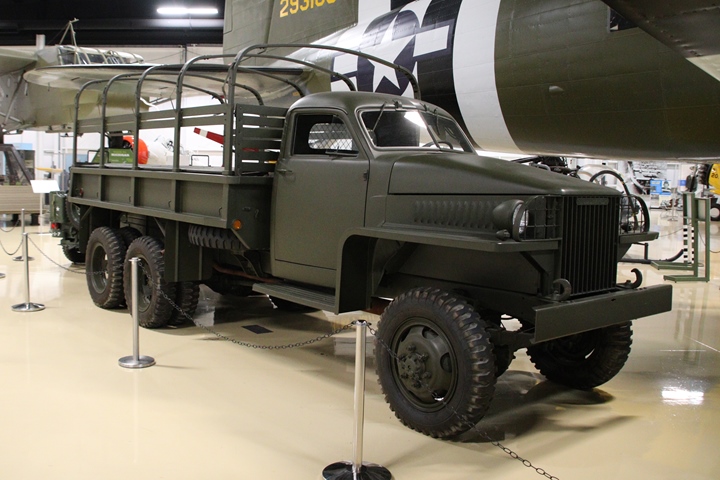
Warner Gear supplied 241,067 T93 series
transmissions and parking brakes for the US6 2-1/2-ton 6x6 and 6x4 trucks built by
Studebaker and the Reo Motor Car Company.
Author's photo.
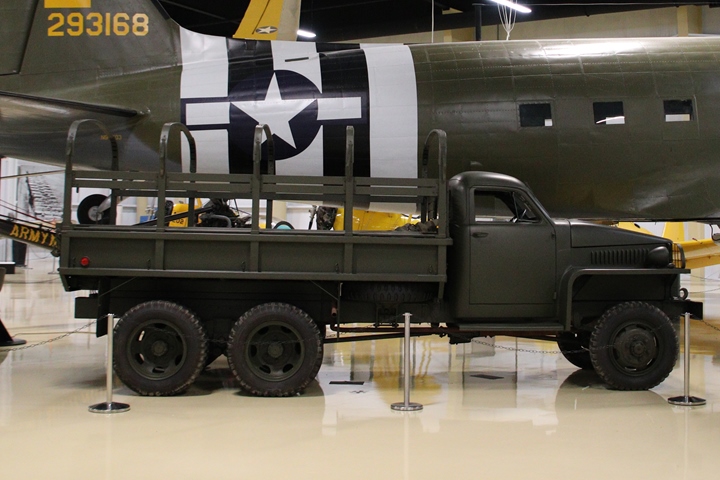
Studebaker was the designer of the truck and
Reo built them under license. Nearly all of the trucks were sent
to the Soviet Union under Lend-Lease where the word truck became
synonymous with the name Studebaker.
Author's photo.
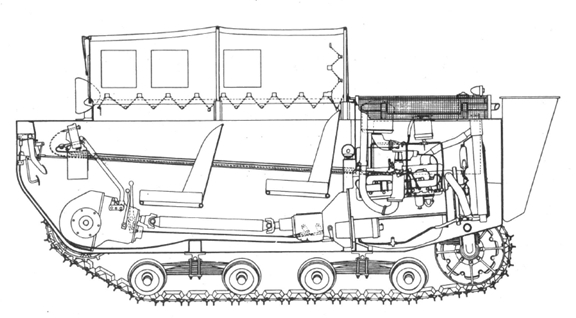
Another Studebaker product for which Warner
Gear supplied transmissions during World War Two was the tracked cargo
carrier. The M28 version applied power to the tracks at the front
of the vehicle. The Warner Gear T-84-J transmission was connected
to driver's controls via linkages. The M28 only had room for the
driver and a passenger behind him.
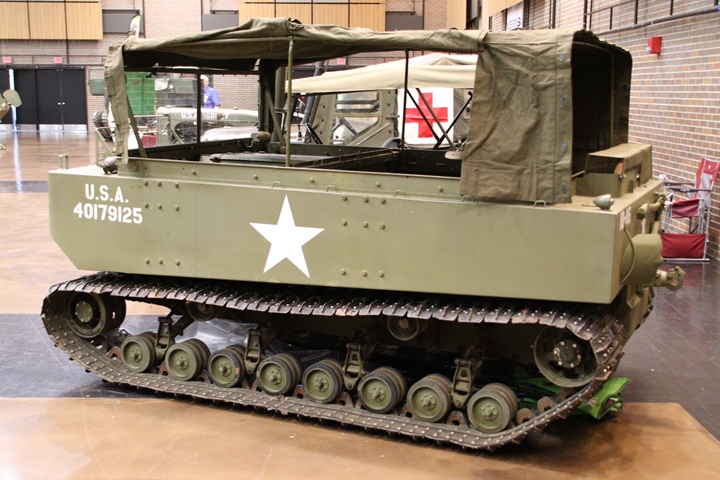
The improved M29 version of the cargo
carrier applied the power to the rear of the vehicle and could seat a
total of four persons.
Author's photo.
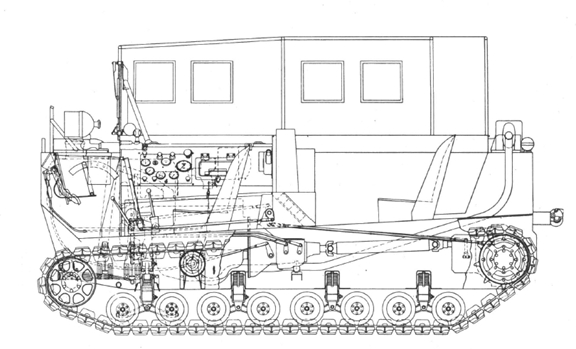
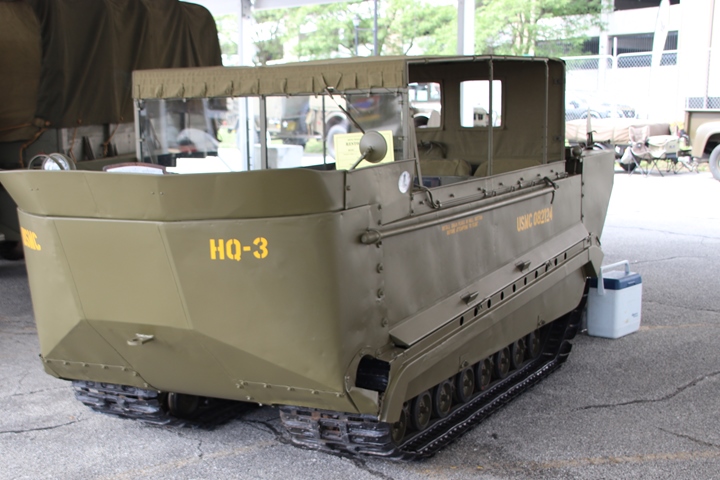
The M29C version of the Studebaker cargo
carrier was amphibious.
Author's photo.
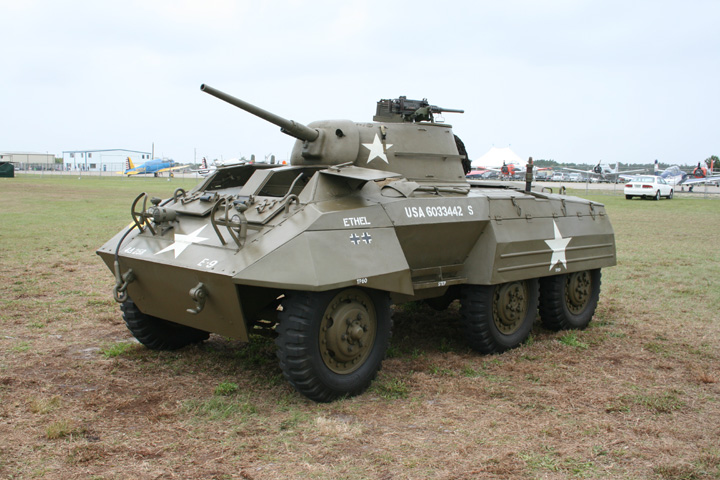
The 8,523 M8 armored cars were equipped with Warner Gear
T-95 transmissions and AS1-J5 transfer cases. The
Author's photo.
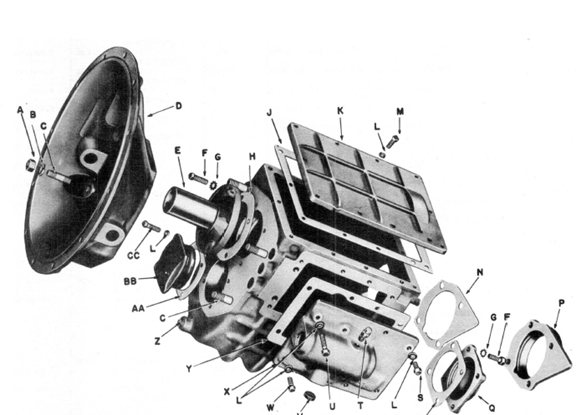
This is an exploded view of the T-95.
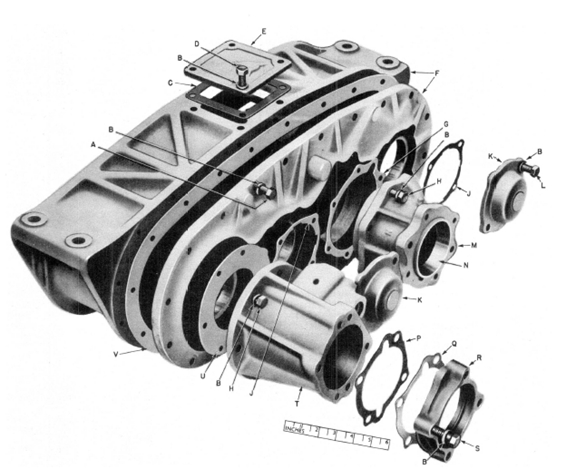
The Warner Gear AS1-J5 transfer case as used
on the M8 and M20 armored cars.
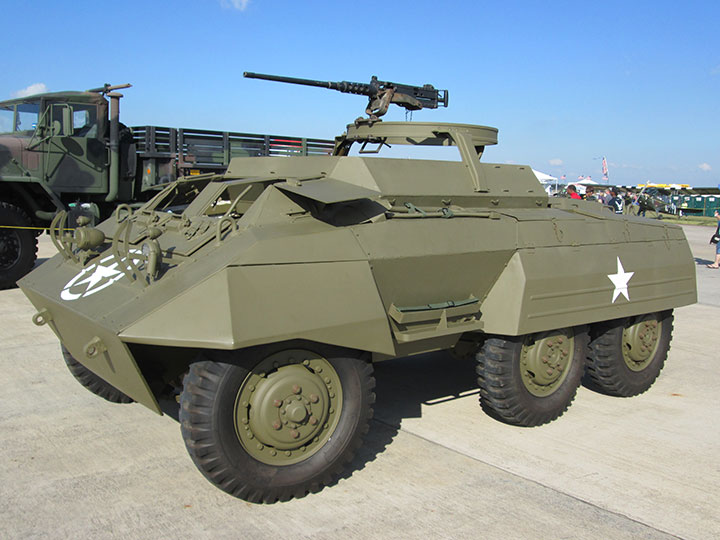
The 3,791
M20 command armored cars also were equipped with the T-95 and AS1-J5.
Author's photo.
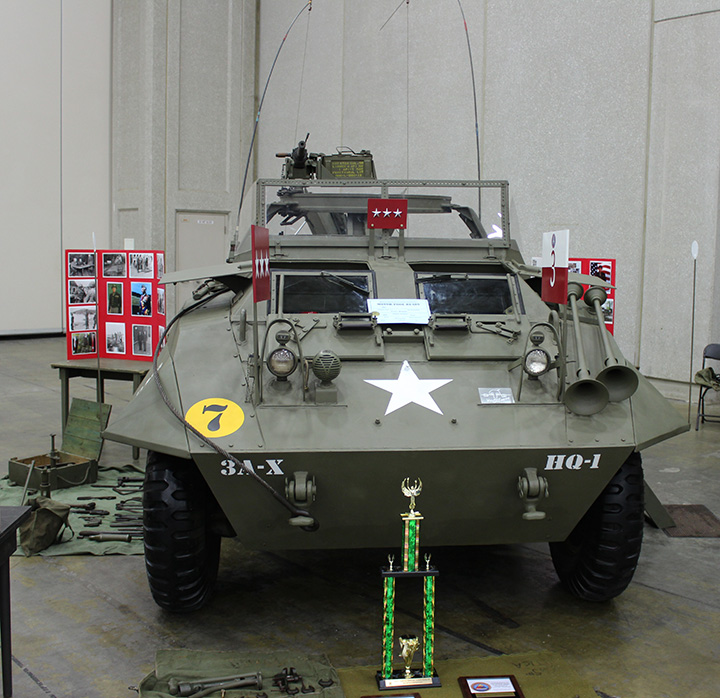
In the final stages of World War Two,
General George Patton used an M20 command car equipped with a Warner
Gear T-95 transmission. This is a replica of what General Patton's
M20 looked like.
Author's photo.
The Plants:
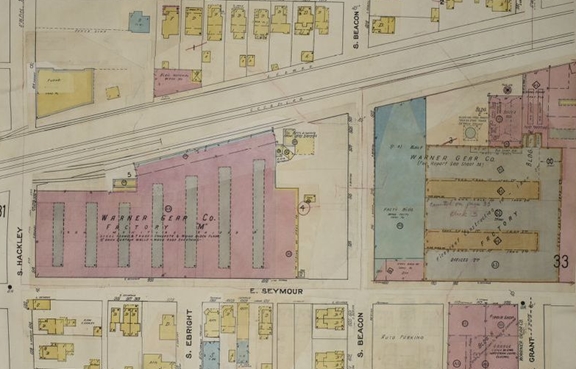 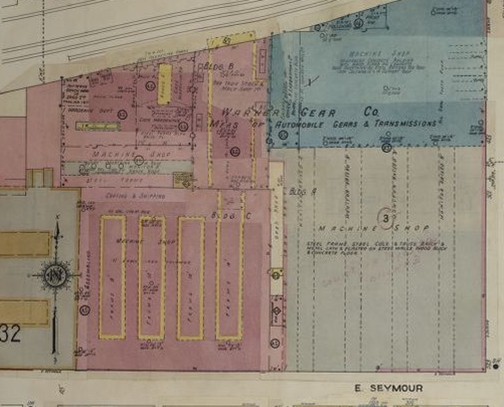
In 1929 Warner Gear Plant Two was built at
South Hackley and East Seymour Streets in Muncie. The plant to the
east may be the original Warner Gear Plant One. During World War
Two, this Warner Gear plant was the address listed as the headquarters
for the company. In working on this project, this was the first
time I was aware of this former Warner Gear plants in Muncie. While the scales of the two pages
from the 1950 Sanborn maps don't quite match up, it shows that Warner
Gear had a substantial facility at this location.
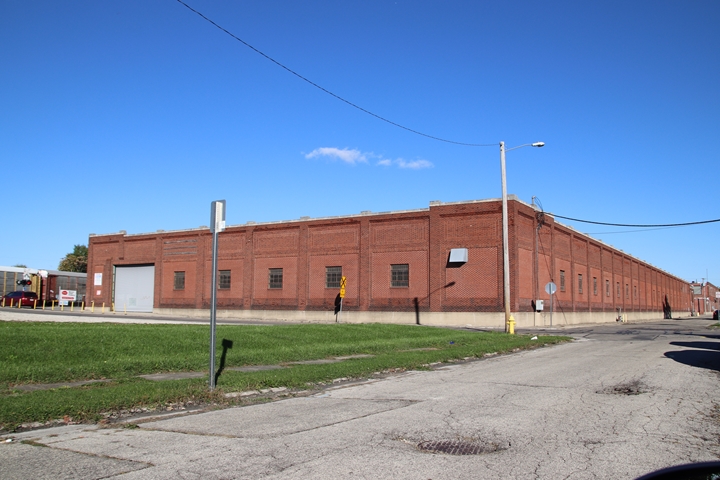
This is the former Warner Gear Plant Two at
the corner of South Hackley and East Seymour Streets in Muncie, IN.
The original plant had large windows that have been bricked over with a
slightly different color of brick. What an elegant looking factory
in the late afternoon autumn sunlight. Author's photo.
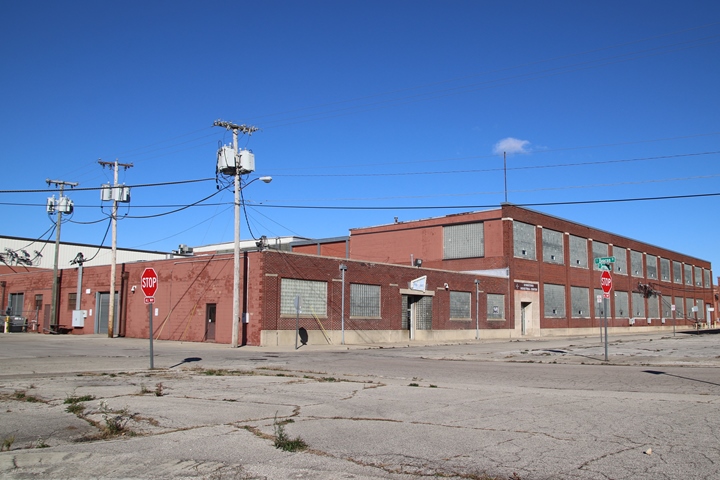
This is the plant that is to the east of Plant Two and is at the corner
of South Beacon and East Seymour Streets. This building still has
the windows in it. This building may be 100 years old, but it is
still in very good condition for its age. It was built to last.
This was most likely the original Warner Gear Plant One in Muncie.
Author's photo.
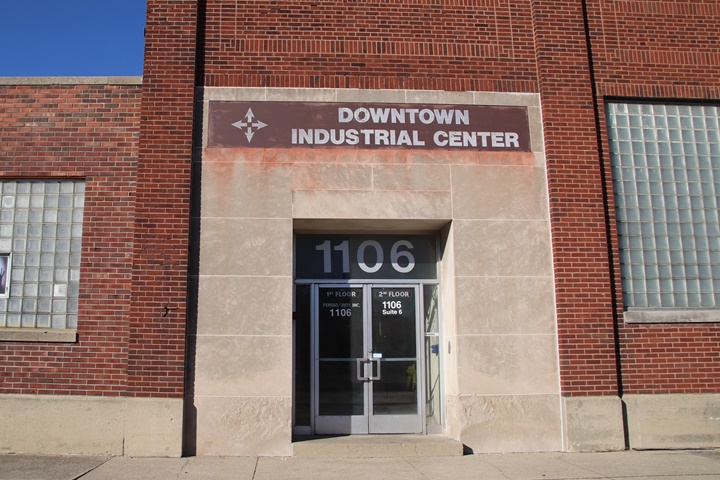
The address given in World War Two U.S. Army
documents shows 1108 Seymour Street as being the address of Warner Gear.
The current address 80 years later differs by only two numbers.
This entrance appears to be the main entrance, indicating this plant was
the original plant and headquarters location for Warner Gear. Most
likely where it currently says, "Downtown Industrial Center" it
previously said "Warner Gear." Author's photo.
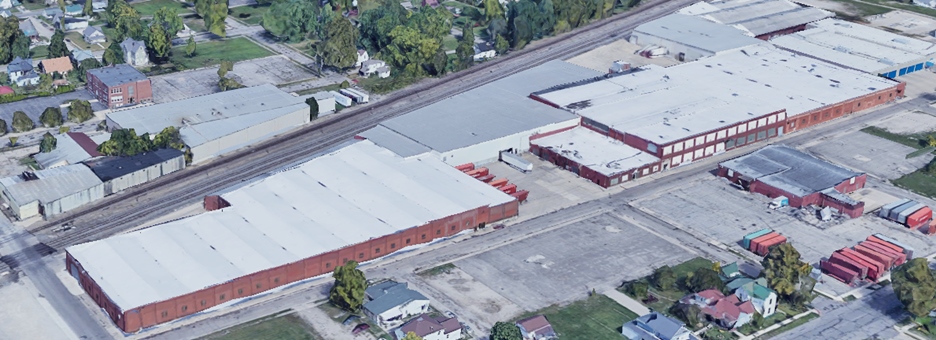
This Google Earth view shows the entire
expanse of the former Warner Gear Plant Two at 1108 Seymour Street in
Muncie, IN. Image added 6-1-2024.
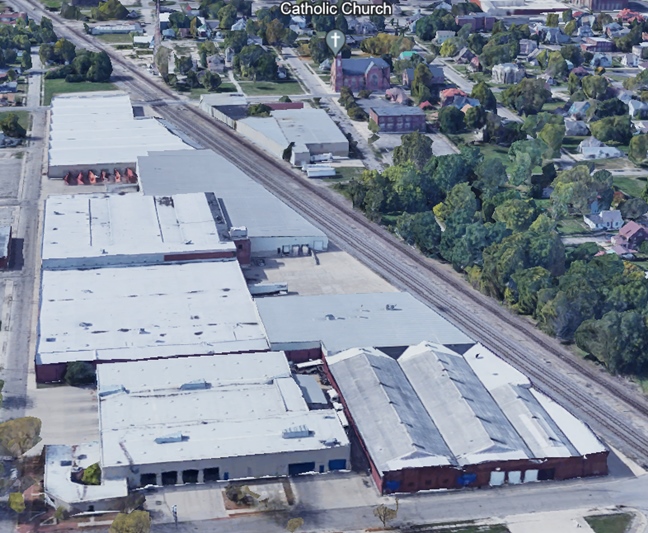
This view is looking west at the complex.
South Blaine Street is in the foreground. Google Earth image
added 6-1-2024.
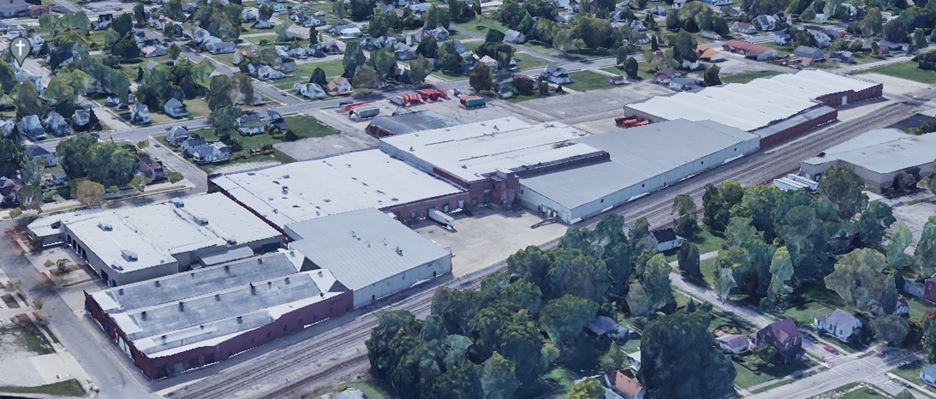
Google Earth image added 6-1-2024.
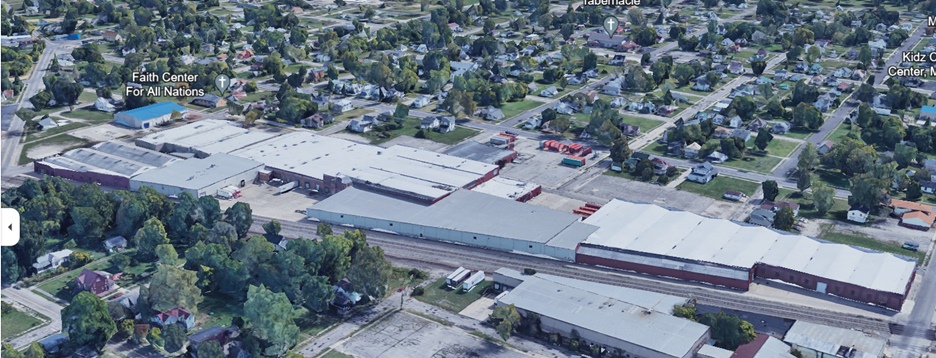
Google Earth image added 6-1-2024.
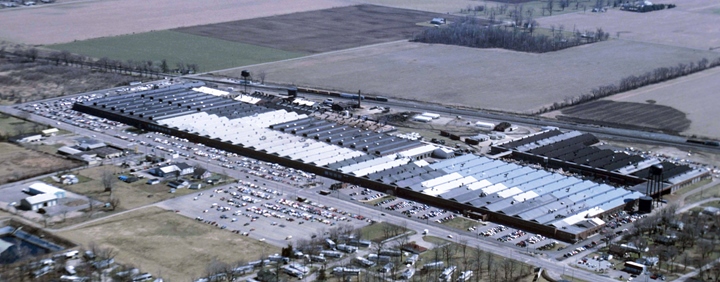
This is the Warner Gear plant I was familiar
with. It was located along State Road 32, or Kilgore Avenue as it
is called as it comes into Muncie. I live just a mile from State
Road 32 and my total travel distance is eleven miles from this former plant. The half mile long plant
was on the south side of the road. I have gone past this site hundreds
of times over the years on my way to Muncie. Photo courtesy of the
Muncie Public Library.
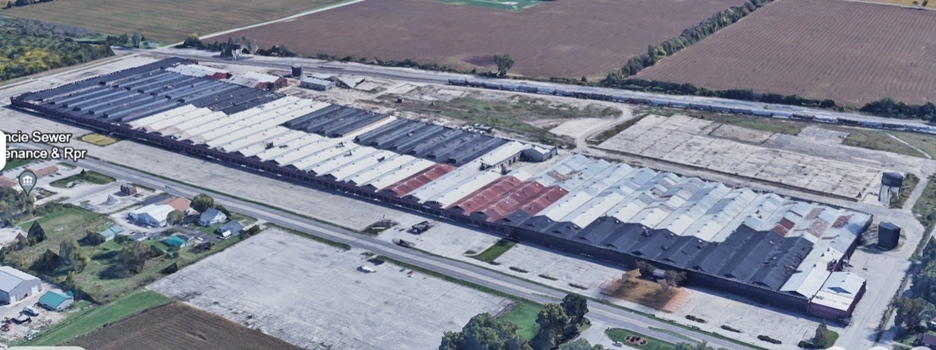
This Google Earth shows Pant 3 some
time after the above photo. The plant is no longer being used and
the buildings in the upper right have already been razed. Image
added 6-1-2024.
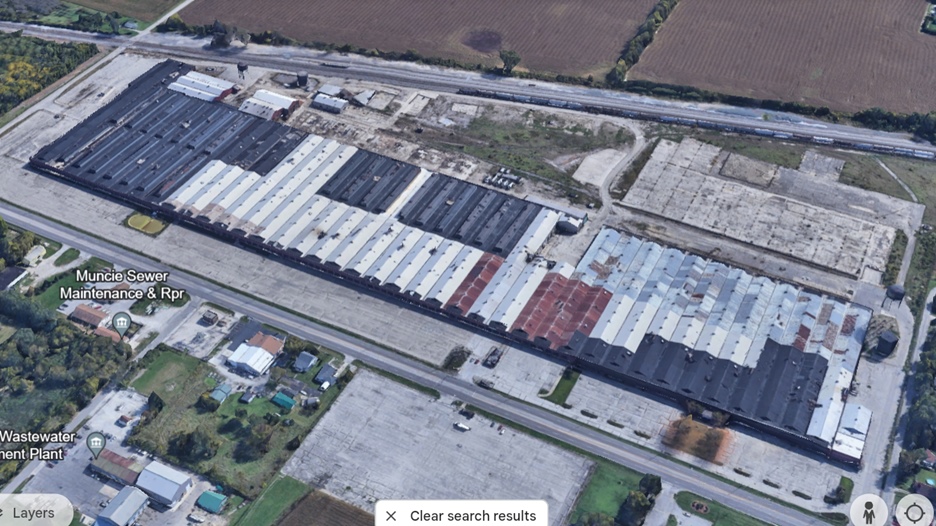
Google Earth image added 6-1-2024.

Google Earth image added 6-1-2024.

This shows the back side of the
complex and the floor for the razed buildings can be seen in the lower
left. This was a huge facility for the manufacture of
transmissions. Google Earth image added 6-1-2024.
The end of Warner Gear and Plant Three:
The photos below were taken on a cold and gray overcast day in December
2017. Just as dreary and cold as the day were the remains of Plant
3 as it was being dismantled for scrap. The was the sad end for a
great company that had for over 100 years been a part of Muncie and for
all the workers it had employed. In other words, this is a very
depressing set of photos.
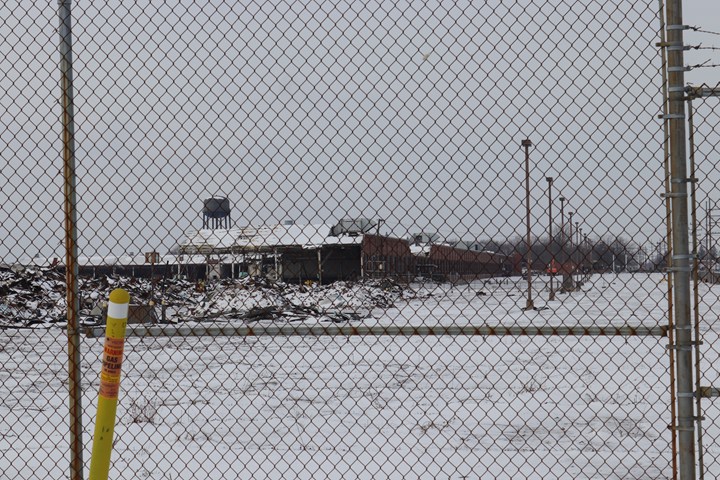
This photo is looking west from the east
property line.
Author's photo.
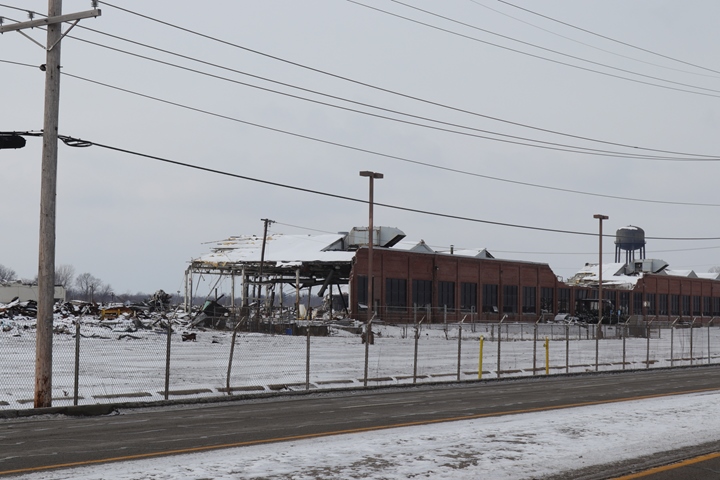
Scrappers always start tearing down plants in the back, away from the
public eye. In this photo the demolition has proceeded to the
front of the plant along State Road 32.
Author's photo.
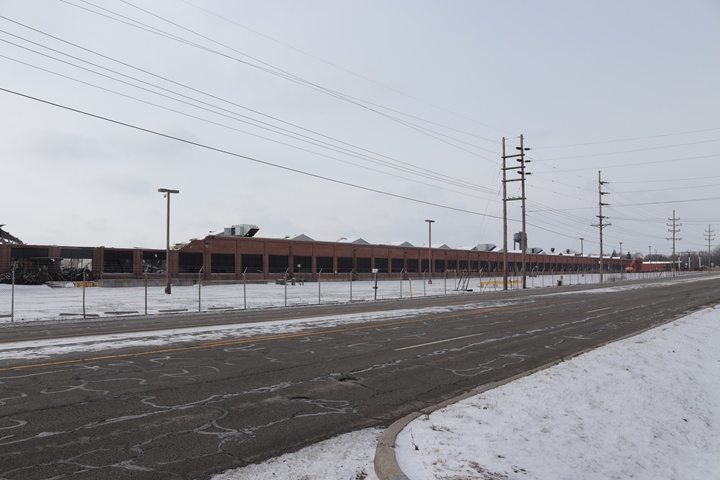
A considerable amount of the front side of
the plant was still standing in December 2017. It is all razed now.
There are still piles of bricks remaining that don't appear to be worth
salvaging.
Author's photo.
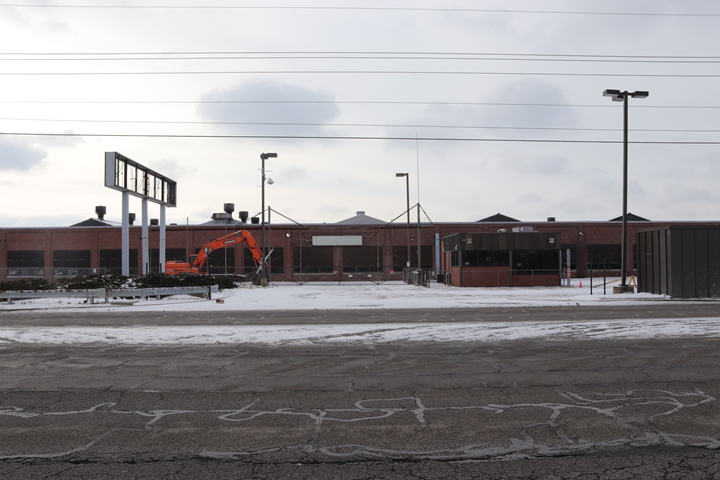
This was the former main entrance along
State Road 32.
Author's photo.
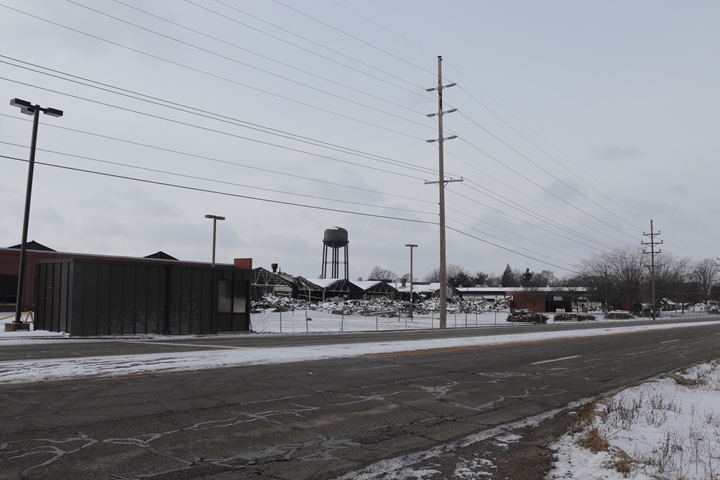
This photo is looking west from the same
location of the previous photo.
Author's photo.

This photo was taken from the southwest
corner of the property and the view is back to the east. There was
still a considerable amount of the factory still standing.
Author's photo.
|






































